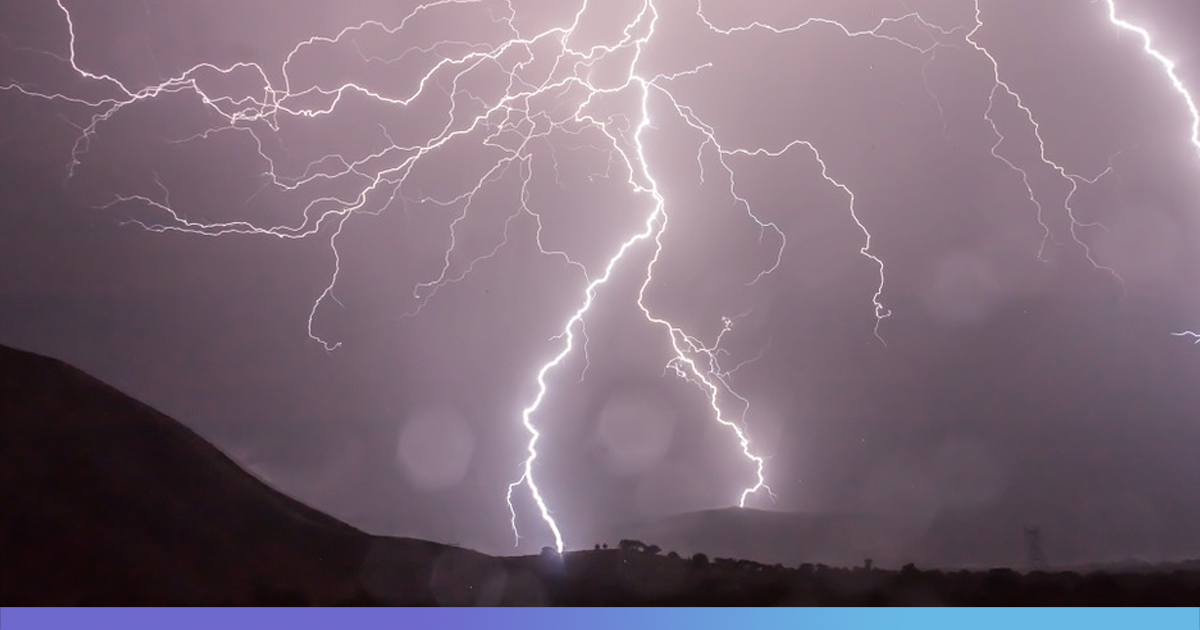As monsoon batters India, incidents of death due to lightning are being reported across the country. At least 73 people died and many more were injured due to lightning in the states of Bihar, Jharkhand and Uttar Pradesh in the last 24 hours. While Bihar reported 39 deaths, Jharkhand reported 28 and Uttar Pradesh reported six.
In Jharkhand, six people died each in Jamtara and Latehar, four in Chatra, three each in Garhwa and Dumka, two each in Giridih and Pakur, and one each in Dhanbad and Deoghar.
In Jharkhand, six people died each in Jamtara and Latehar, four in Chatra, three each in Garhwa and Dumka, two each in Giridih and Pakur, and one each in Dhanbad and Deoghar. Three in Dhanbad and Latehar, and two in Chatra were also injured. Rs four lakh ex-gratia has been announced to the victims’ families by both Jharkhand and UP government.
Earlier, 32 people died in Uttar Pradesh due to lightning on Sunday, July 21. A day before, lightning killed another man in the state. 13 others were injured.
Sunday’s lightning victims included seven each in Kanpur and Fatehpur, four in Jalaun, five in Jhansi, two in Ghazipur, three in Hamirpur, and one each in Jaunpur, Pratapgarh, Kanpur Dehat and Chitrakoot.
Chief Minister Yogi Adityanath, expressing sorrow over the deaths, issued orders to the respective district magistrates to ensure compensation of Rs four lakh is given to each of the families of the deceased.
In separate incidents in Rajasthan’s Jhalawar, four farmers, including a 50-year-old woman, were killed as lightning struck them while they were working in their fields under the rains.
On June 19, eight people were killed and eight others were injured due to lightning in Bihar’s Nawada. Seven of the deceased were children aged 15 years or below.
Bihar Chief Minister Nitish Kumar too announced an ex-gratia of Rs four lakh to the family of the people who died.
With the rains battering the country and people in danger of losing their lives to lightning, they often fall for myths to protect themselves rather than doing what is really necessary.
Lightning Myths
Not all that we are advised to do to protect ourselves from lightning are really true.
If you think crouching down will reduce your risk of being struck by lightning when you are caught in a thunderstorm outside, you are wrong, says National Weather Service. The most you can do is run to a hard-topped vehicle or substantial building.
We are often told that lightning never strikes the same place twice, which is wrong, as there are buildings which have been struck an average of 23 times a year.
You are wrong if you think you are safe when it is not raining or there are no clouds overhead. The truth is, lightning can strike far outside the rain or thunderstorm cloud, more than three miles from the centre of the thunderstorm.
The most chilling of lightning myths is that a lightning victim is electrified, and if you touch them, you will get electrocuted. No, the human body does not store electricity, and it is absolutely safe to touch a lightning victim and give them first aid.
We are often told that if we are outside during a thunderstorm, we should take shelter under a tree. In reality, being under a tree is one of the leading causes of lightning casualties.
Many of us may believe that structures with metal, or metal on the body (jewellery, cell phones, watches, etc), attract lightning. No, the dominant factors controlling where a lightning bolt will strike are height, pointy shape, and isolation. The presence of metal makes no difference.
No, lying flat on the ground when you are outside and might get stuck by lightning is not an option. In fact, your chance of being affected by potentially deadly ground current only increases. The only option is to keep moving towards a safer shelter.
The chances of a cell phone being struck by lightning are not likely, although we are often told otherwise. What we should avoid using during thunder and lightning is a corded phone, as it is physically connected by wires to the outside.
Dos And Don’ts
When we are caught in a thunderstorm, we must try to find the best landscape. Strong, reinforced buildings such as homes and businesses tend to provide the most protection. During emergencies, however, any shelter is better than no shelter at all. Hence, we should and move into a shelter away from windows.
If we are outside and unable to find shelter anywhere indoors, it is most appropriate to take cover in a vehicle, as a car’s metal structure helps reroute a potential lightning strike.
We must ensure never to take shelter under trees, tall objects, and metal structures (such as fences), as they are most likely to be hit. We must also stay away from doors and windows and conductors.
Since metal and water conduct electricity, so we must avoid plumbing or activities using water, such as taking a bath or doing laundry. We must also refrain from using corded telephones.
An important part of thunderstorm safety is understanding the risks of lightning. It plays a crucial role in keeping us and our close ones safe during severe weather conditions.
Also Read: Worsening Bihar Floods: Death Toll Reaches To 119, More Than 98 Lakh Affected











